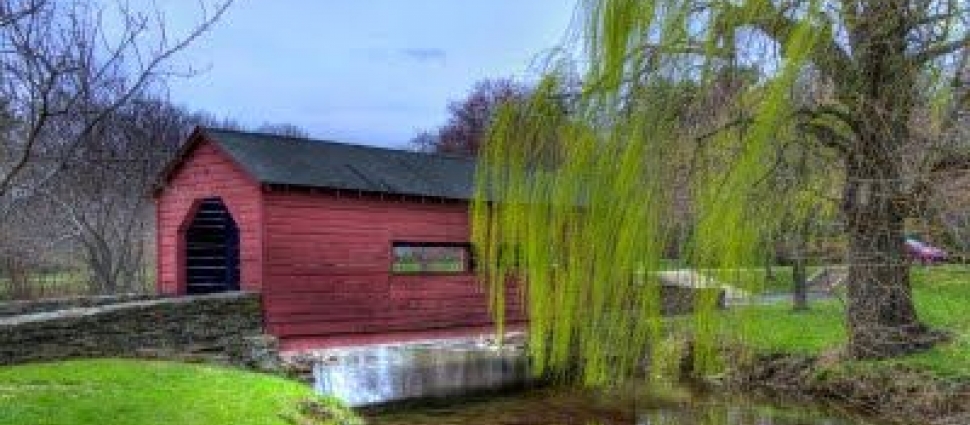Back Road Bliss

One thing that stinks about moving to a new town is that you are not familiar with the back roads. Matt and I have lived in the panhandle of WV now for going on eight years, and we are still learning some cool new ways to get to where we are going. Frederick, MD, the town I am from, has awesome back roads. Some of them I know the names, but mainly I navigate by landmarks such as houses, trees, and cool rocks. When I give directions it’s more like, “Turn left at the high school, go straight until you see the cupcake bakery on the corner and make a slight right. When you see the rock that looks like a cow, you’re almost there.”
If you’ve never lived in Frederick, you may look at it as more of a commuter city for D.C., Arlington, and Virginia. You may have some respect for it’s civil war history, agriculture, and artistic community. Downtown Frederick has established a great reputation for it’s local restaurants and shopping. But if you were to visit, you’d most likely travel Interstate 270 to 70, and straight to Market Street. You wouldn’t be familiar with Rocky Springs Road, where I ran my first car into a ditch, or the roller-coaster-like hills on Hamburg and Left Hand Fork Road that my dad loves to challenge us with on a bike ride (a.k.a. the ride from hell). When you really live in a town and love it, the back roads are a particular delight. The stories you know from them add luster to the beauty they convey.
When I was a little kid, I thought Barbara Fritchie was just a cool restaurant on Rt. 40 with an awesome candy cane statue out front. That’s where I would go for sugared fastnachts and hot chocolate. Later, I learned that she was a fascinating woman who stood against slavery. John Greenleaf Whittier was an abolitionist poet who wrote a famous poem about her courageous stance against the Confederate forces as they marched through town. Churchill recited that poem to FDR while they were driving through Frederick. Now, my kids probably think Whittier is just the neighborhood where their Paw-Paw lives, and Greenleaf is just the name of the pool they swim in. Some streets derive the meaning of their name from personal experiences, like Left Hand Fork Road, and with some we discover the meaningfulness of the name itself.
This makes me think about the similarities in how we read Scripture. When I was young, I read my Bible like someone who was visiting a town. Sure, I knew the main highways--key verses on certain doctrines. I knew the Romans road for when I needed a quick evangelism refresher course. I could turn to Phil. 1:6 for assurance of salvation. I nailed down some important passages for the basic questions. But I wasn’t opening my eyes to the kingdom it proclaimed. I didn’t know the real landmarks of covenant, redemption, Christ, and his people. It’s books seemed separated to me, and I wasn’t aware of the back roads that connected them all together as God’s covenant treaty to his people. I thought I loved God’s word, but really I was more like a visitor or new resident. I didn’t see how its historical people related to gospel. It is so easy to look at the pages of Scripture as a guidebook for moral living. If we look at God’s Word as directions on how to live better, we will end up in despair when we attempt to fulfill its requirements. We will find that we are more lost than we ever thought we were. But if we realize that we are reading the living word of God’s covenant love for his people, we discover intimate communion. We learn that Jesus is so much more than someone who’s there to help us get through our problems. As we learn the meaning behind such signs as effectual calling, justification, propitiation, adoption, and glorification we begin to love the One who perfectly fulfilled God’s law on our behalf. Instead of bringing us to despair, the law will guide us to reciprocate that love to our neighbor. I am filled with gratitude toward the triune God for giving me a desire for his word as I grew. Now, I know my way around. I enjoy taking a Sunday drive on the back roads of Scripture, admiring the resplendency of each passage. I can do this with confidence because I know where they all lead—to Christ, to Zion. He is the message on every sign. Because of this, I can also endure the passages that feel more like Left Hand Fork Road. As I am convicted of sin, for a moment I may think I’ve ran myself into a ditch that I cannot get myself out of. But I am not stranded. Christ is in those passages as well. I can cling onto Him in every word.




